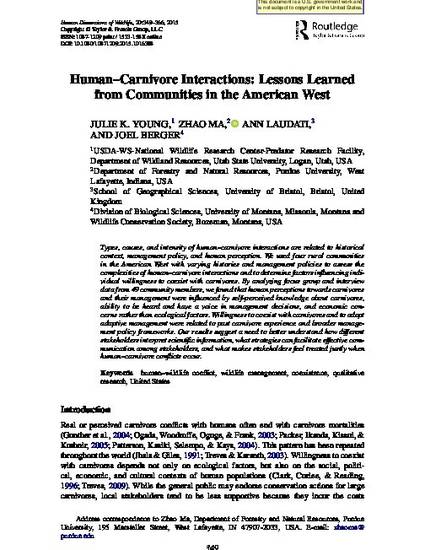
Human Dimensions of Wildlife, 20:349–366, 2015
Types, causes, and intensity of human–carnivore interactions are related to historical context, management policy, and human perception. We used four rural communities in the American West with varying histories and management policies to assess the complexities of human–carnivore interactions and to determine factors influencing individual willingness to coexist with carnivores. By analyzing focus group and interview data from 49 community members, we found that human perceptions towards carnivores and their management were influenced by self-perceived knowledge about carnivores, ability to be heard and have a voice in management decisions, and economic concerns rather than ecological factors. Willingness to coexist with carnivores and to adopt adaptive management were related to past carnivore experience and broader management policy frameworks. Our results suggest a need to better understand how different stakeholders interpret scientific information, what strategies can facilitate effective communication among stakeholders, and what makes stakeholders feel treated justly when human–carnivore conflicts occur.
Available at: http://works.bepress.com/julie_young1/239/

U.S. Government Work